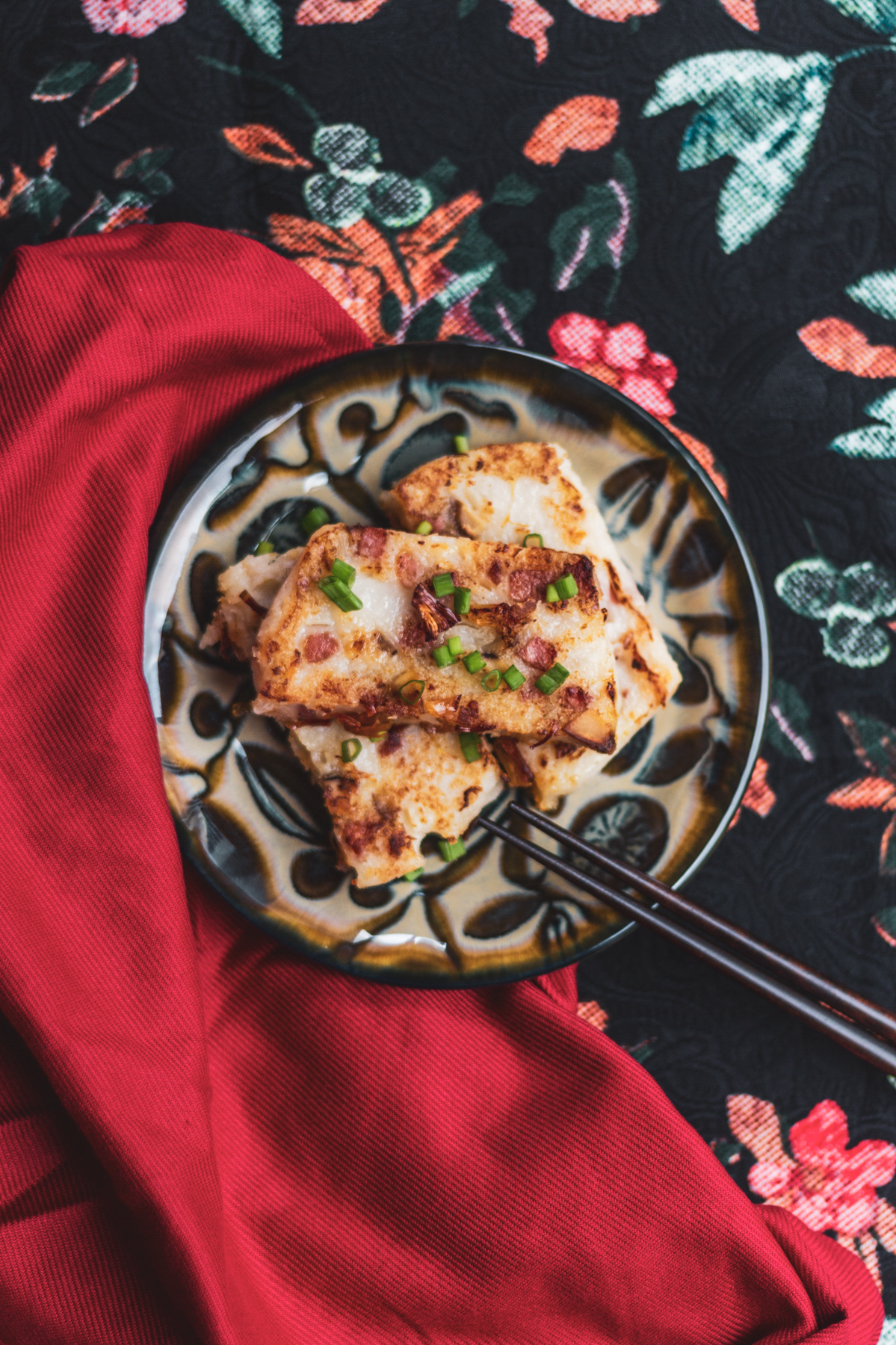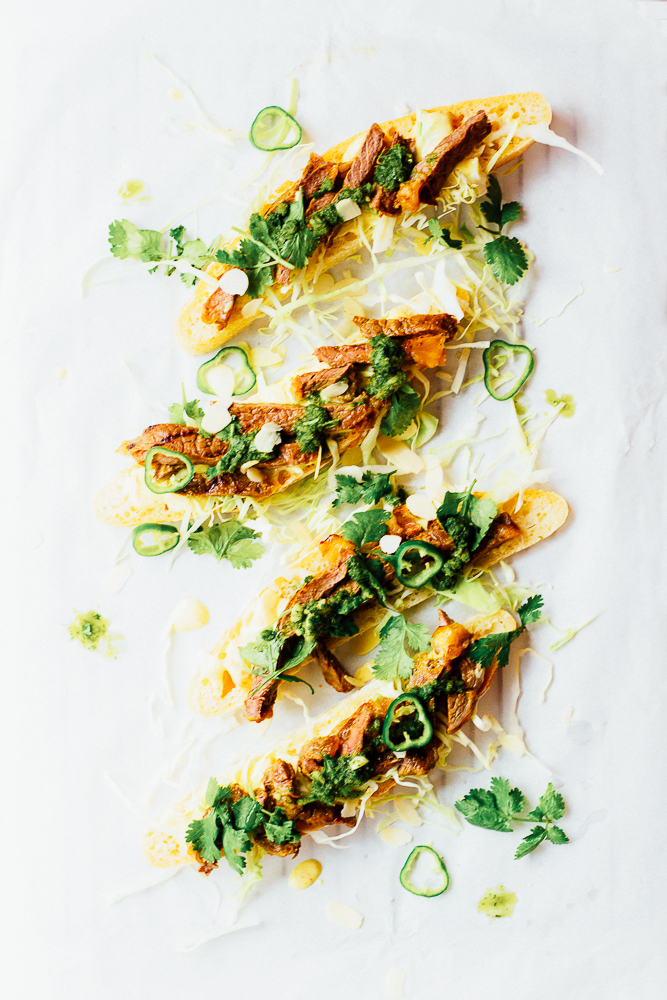
Today, the Chinese in Singapore mainly are both English and Chinese speakers hence each of us also inherits our grandparent’s roots. The most widely spoken dialects in Singapore include Hokkien, Teochew, Cantonese, and Hainanese. While both Joe and I surely learned and inherit both the culture of the Cantonese and Teochew. We also study deeply the food culture of our grandparents and parents origins. Despite being Chinese, different groups have different ways of preparing food. While the Cantonese love the bold flavours, the Teochew definitely enjoying the simplest of the taste that came from the ingredients.
While we are fortunate to born in both the culture as food is never boring with just one kind of flavour. This week we decide to share with you the making of Turnip Cake, 萝卜糕 is also known as Lo Bak Ko (the Cantonese pronunciation of Turnip Cake).
“Go” is the Cantonese way of saying “Kueh”, you will be surprised that in Asia that cake has multiple and hundreds of ways of making and we never define that it has to be just sweet. Savoury cakes play a huge part in our diets which we hope that more people get to know more about them.
Making Lo Bak Ko is fairly easy hence it contains many prep works, so if you are doing alone it considers at a 4 stars tough level. So we highly recommend you make it in a huge group when everyone is involved it makes things simple and time-saving.

Awhile back, I have this good friend shared with me that she was upset that foreigners don’t know about our dessert or Kueh’s culture.
As she mentioned that a foreign laughed about how Kueh Lapis is being made. “A dessert should be simple and what’s the fuse of having so many layers and despite the taste is the same,” she repeated what she heard from. That made me want to share more about our food – it’s a culture of our origin that we are proud of.
As you see, while Peranakan is a mixture of two cultures (Chinese and Malay) when two couples bonded as one.
It’s definitely will be complex and different but here is where a new culture is formed. That’s something so special that deserves to be praised and you can simply trace the history through the food we cook and eat. So we hope that you will fall in love with our food culture as we do.


You could serve in two beautiful ways – steam or pan-fry it after the 1st round of the steam (that we shared in the instruction sheet below).
We love the result of the Lo Bak Go, as it is firm and flavourful. You can serve and garnish it with spring onion. You will be able to taste all the amazing flavours from ingredients and with not even a bit of salt.
What I like about making it yourself is you could add in all the ingredients as much as you want, unlike a plain Turnip Cake you purchase outside.
Give this recipe a try and don’t forget to tag us on Instagram as @leplaincanvas and use the #byplaincanvas hashtag. We love seeing your takes on my recipes!
xoxo, Angela
Turnip Cake (Cantonese Lo Bak Go)
The Cantonse Go (Kueh) – made with raddish but often rampantly mistranslated as ‘turnip cake’- is a must for Chinese New Year or a Dim Sum feast.
Ingredients
- wet rice flour
200g rice flour
140g water
- other ingredients
45g dried shiitake mushroom
60g hay bee (dried shrimp)
360g peeled daikon raddish
30g wheat starch
2 lup cheong (preserved Chinese sausages, about 110g total)
2 tbsp lard
2 tsp minced garlic
2 tbsp minched shallots
2 tsp Shaoxing wine
1 tsp sugar
1 tsp white pepper
300g very hot water
oil for greaing pan
Methods
- Met wet rice flour*(see note 1), which will be a stiff, claylike paste. Cover and chill for 12 hours.
- Soak dried mushroom in lukewarm water for 8 to 12 hours in the fridge. Drain and reserve soaking water. Remove stems and cut caps into 6mm dice.
- Rinse ans drain hay bee, cover with water and soak for 15 minutes. Drain, reserve soaking liquid, and chop roughly. Combine haybee liquid and mushroom liquid.
- Grate one third of the radish into fine sherd with a stand grater. Cut the rest into 5cm matchstick, 3 mm thick. Combine all the raddish with the salt in a large bowl and mix well, gently rubbing in the salt. Cover and set aside for 20 minutes.
- Pour raddish into a sieve se over a bowl, ans squeeze raddish shreds to extract their juices. Add enough hay bee -mushroom liquid to the raddish juice to obtain 420g liquid in total. Whisk this liquid with the wet flour and wheat strach until smooth. Set aside.
- Rinse lup cheong witgh hot water, drain and pat dry. Cut into 6mm dice.
- Heat lard in a wok over medium heat. When very hot , add lup cheong (preserved chinese sausages), garlic and shallots and fry for 1 minute. Add hay bee (dried little shrimp) and fry until shallots start to brown lightly. Add the shiitake mushroom, wine, sugar and pepper and fry for 2 minutes. Transfer mixture to a bowl. Do not need to wash the wok.
- Finish the batter. Pour the 300g very hot water into the rice batter while whisking constantly until smooth. Pour batter into the wok. Add raddish, and stir constantly till the batter thickens to a creamy paste. Stir in fried ingridents and mix well. Spread well into the greased pan and spread evenly.
- Steam “Go” over medium-high heat for 45 to 55 minutes, until moistly set. A chopstick inserted into its centre should emrge damp but mostly clean. Serve it warm or fried it with some oil until browned.
Notes
- Making wet rice flour; Combine the rice flour with the water and slowly stir and fold with spatula until througly combined.













No Comments